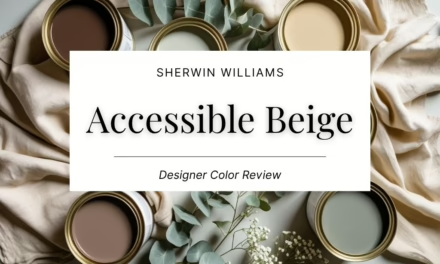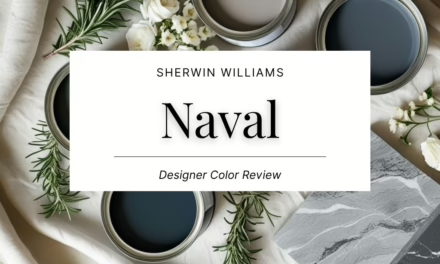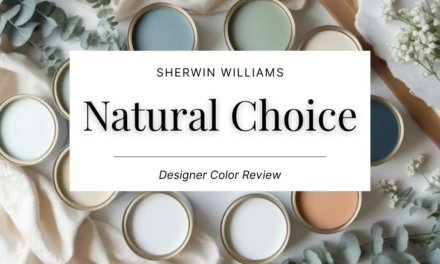Sherwin Williams Natural Linen (SW 9101) Color Review
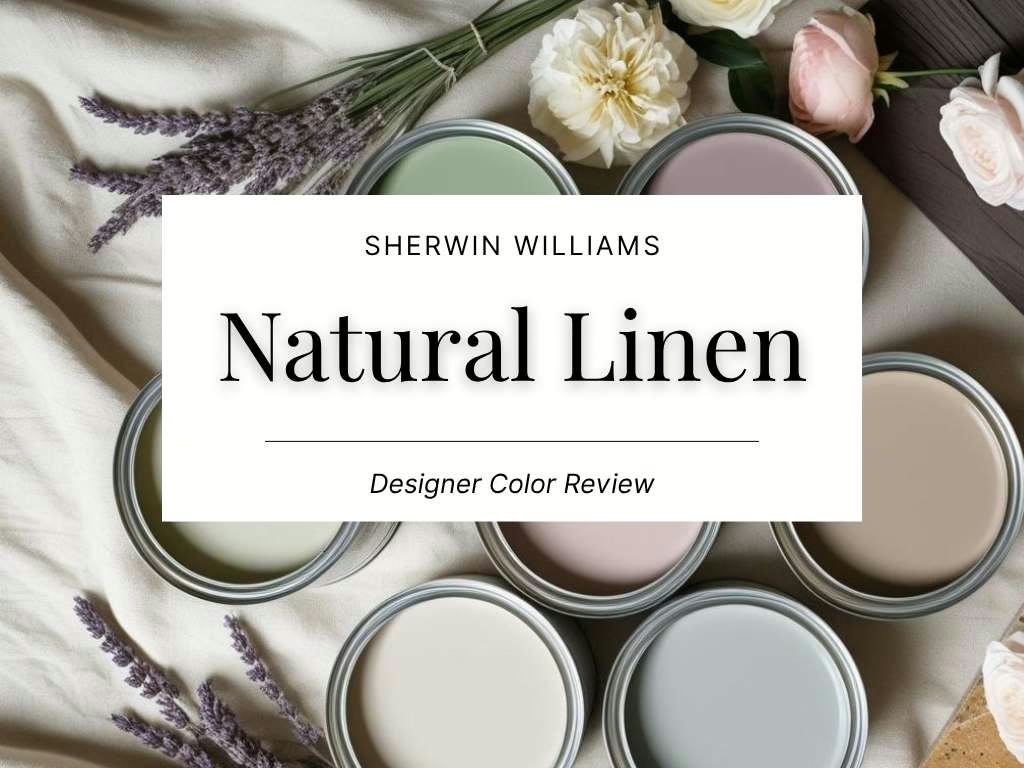
Natural Linen: A Breezy, Balanced Neutral That Makes Everything Feel Softer
Let’s talk about a color that doesn’t scream for attention but quietly improves everything around it. Natural Linen by Sherwin-Williams is one of those rare neutrals that feels soft and grounded without falling into the trap of being bland. If you’re looking to move beyond plain white or builder beige – but still want something timeless – this could be exactly what you need.
Sherwin-Williams Natural Linen (SW 9109) is a subtle beige with a greige influence that creates an easy, elevated look in any room. It brings warmth without heaviness, and its tone pairs beautifully with light woods and natural textures.
What Does Natural Linen Look Like?
Natural Linen is best described as a light beige with a soft, muted undertone that makes it more refined than typical warm neutrals. It has a smooth, chalky quality that helps it read clean and creamy, not yellow or pink. There’s a freshness to it, but it’s still warm enough to keep a space feeling cozy.
In different lighting, it can lean slightly more traditional or modern. That’s what makes it so usable – it blends in with a wide range of design styles without feeling generic.
What Are the Undertones of Natural Linen?
Natural Linen leans warm overall, but its undertone includes a gentle greige cast that adds balance. You won’t get the golden, orange-beige vibes that can sometimes dominate in this category. Instead, it’s a smoother, softer warmth – think sun-washed stone or bleached canvas.
Depending on the light, you might also notice a slight taupe or clay-like undertone, which keeps it from looking too clean or sterile. It’s flexible enough to work with both warm and cool palettes.

What Is the LRV of Natural Linen?
The Light Reflectance Value (LRV) of Natural Linen is 66, meaning it reflects a high amount of light. This makes it a great choice for brightening up a space while still giving you color and warmth on the walls.
In darker rooms, it holds up well without going muddy. In well-lit spaces, it glows in a way that feels natural and calm. You get softness without sacrificing clarity.
Is Natural Linen Warm or Cool?
This color leans warm, but the greige undertone keeps it from being overly yellow or golden. It’s a more subtle, restrained warmth that feels modern and understated.
It doesn’t lean too far in either direction, which is why it works well in a wide variety of homes – from traditional to contemporary. If you’re layering in woods, stone, or natural fiber decor, this color slips in effortlessly.
What Lighting Directions Work Best?
Here’s how Natural Linen reacts in different types of natural light:
- North-facing rooms – Appears a bit more muted and cool, showing more of its greige side
- South-facing rooms – Looks warmer and brighter, with a soft beige glow
- East-facing rooms – Picks up creamy tones in the morning, then settles into a quiet neutral in the afternoon
- West-facing rooms – Starts lighter early in the day, then takes on a cozy, golden cast in late afternoon sun
Always sample it in your own lighting, especially if you have strong natural light or darker rooms – it does shift depending on exposure.
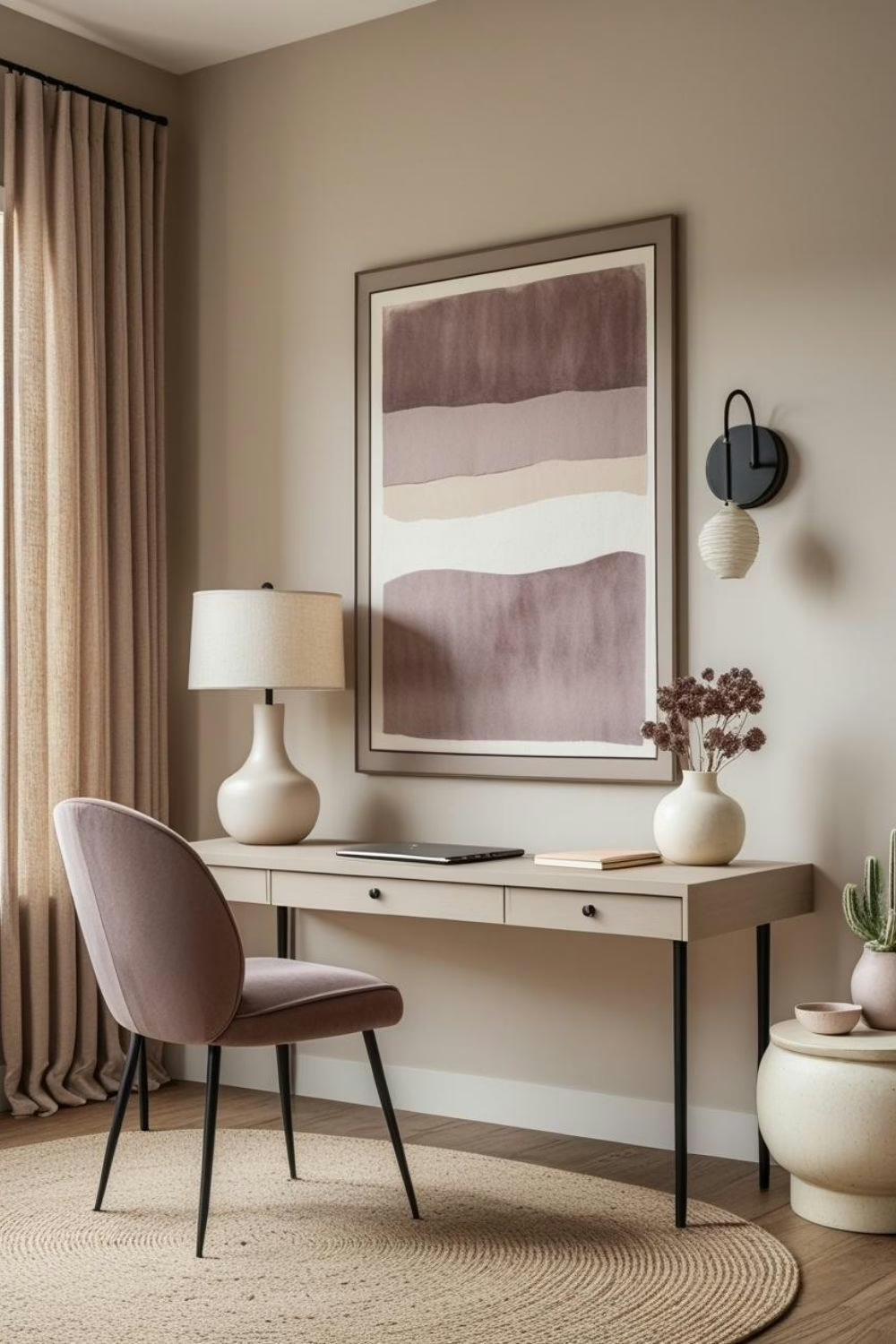
Best Rooms to Use Natural Linen In
This is one of those rare colors that feels right almost anywhere. Some standout uses include:
- Living Rooms – Creates a comfortable backdrop that works with layered textures or minimal styling
- Bedrooms – Feels calming and warm without darkening the space
- Offices/Studios – Encourages focus while keeping the environment soft and welcoming
- Dining Rooms – Elegant enough to feel styled, relaxed enough to feel lived-in
- Accent Use – Consider it for built-ins, ceilings, or cabinetry if you want a soft, tonal look without stark contrast
What Wood Tones Pair Beautifully?
Natural Linen really shines when paired with:
- Light oak or ash – Perfect for a modern Scandinavian or coastal look
- Mid-tone walnut or cherry – Offers depth and contrast without overpowering the space
- Distressed or reclaimed wood – Emphasizes the earthiness of the color for a more rustic or organic style
Avoid orange-heavy woods, which can make the undertone appear more yellow than intended.
What Materials and Finishes Complement SW Natural Linen?
This shade works best with natural, textural finishes. Try mixing:
- Linen, cotton, and jute – To echo the soft, casual feel of the color
- Bouclé or velvet – To add warmth and subtle luxury
- Marble, travertine, or honed stone – Natural stone pairs effortlessly with this tone
- Brass, matte black, or aged nickel – Adds contrast and elegance without looking flashy
Keep finishes soft and organic for the best effect.
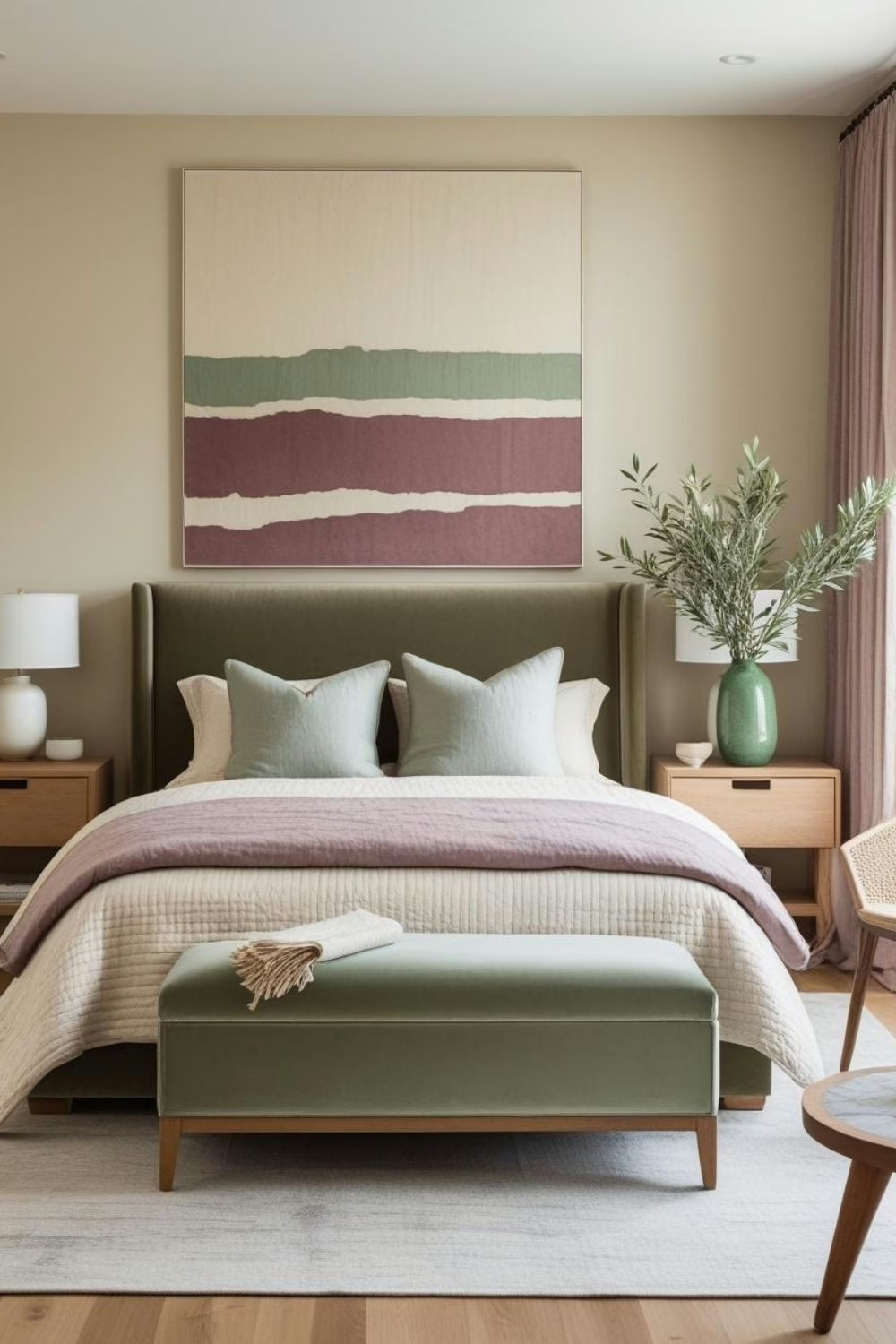
What Colors Pair Well With Natural Linen?
This color is super versatile in a palette. Some combinations that work especially well include:
- Soft whites and creams – Like SW Divine White for a fresh, layered neutral scheme
- Earthy greens – Olive, moss, or sage create a grounded, nature-inspired combo
- Dusty purples or mauves – For subtle contrast that still feels elegant
- Deep charcoals or muted blacks – To anchor a room or add a modern edge
- Terracotta or warm blush – For a European or Mediterranean vibe
If you want a no-fail starting palette, try pairing Natural Linen with Divine White (SW 6105), Antler Velvet (SW 9111), and Gris Morado (SW 9156) for a soft but sophisticated mix.
And if you’re building a color story and want expert coordination, explore my color guides on Etsy – each one is designed to make paint pairing easier and more beautiful.
What Styles Work Best with SW Natural Linen?
Natural Linen has a quiet elegance that adapts to multiple design styles:
- Modern European – Pairs beautifully with vintage furniture, brass, and plaster accents
- Scandi Minimalism – Clean, warm, and perfect with pale wood and textured layers
- Cottagecore or Boho – Emphasizes softness and makes floral, patterned fabrics feel grounded
- Transitional – Blends easily with classic silhouettes and modern finishes
- Modern Farmhouse – Warms up black-and-white schemes without overpowering them
Would I Use This for Trim or Doors?
Yes, but selectively. Natural Linen makes a great choice for:
- Interior doors – Especially in all-white or tonal rooms, where it adds quiet contrast
- Built-ins or cabinets – Brings warmth and a custom look without feeling trendy
- Trim – Use with caution; works best in rooms with deeper wall colors or in tonal palettes
It’s not a replacement for crisp white trim, but it can be beautiful when used intentionally in the right setting.
Who Is Natural Linen Best For?
This color is ideal for:
- Homeowners who want warmth without yellow
- People updating older spaces where traditional beiges feel too dated
- Design lovers looking for a soft, elegant alternative to stark white
- Anyone building a layered, natural-feeling palette with texture and depth
Curated Wall Art for Elegant Homes
Bring softness, texture, and intention into your home with digital wall art inspired by wabi-sabi, abstract forms, and muted watercolors. Every piece is crafted to create stillness and beauty—whether you’re styling a gallery wall or a minimalist nook.
Final Thoughts on SW Natural Linen
Natural Linen is a warm neutral that feels effortless, but never boring. It brings softness and lightness to a space, while still reading like a thoughtful design choice. Whether you’re painting a full room, updating cabinetry, or adding depth to a neutral palette, this shade delivers.
Start with a peel-and-stick sample (like those from Samplize) to see how it shifts in your space before committing. It’s one of those colors that plays beautifully with its surroundings.
Need help building your palette?
Check out my curated color guides on Etsy – they take the guesswork out of pairing and help you decorate with confidence.
Until next time,
Franzi

